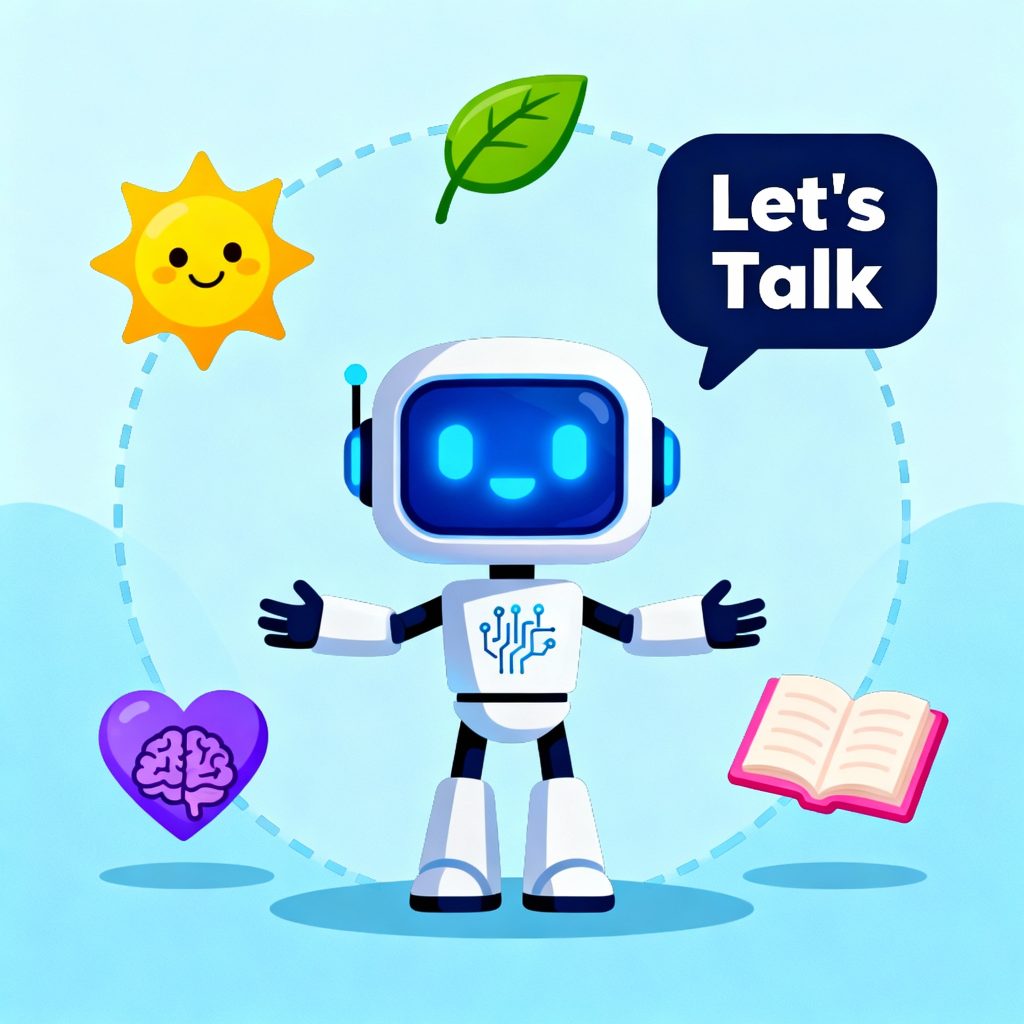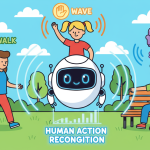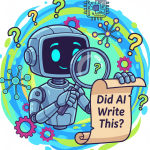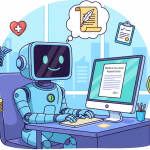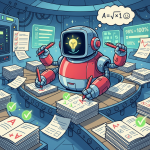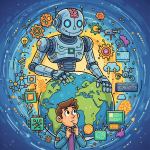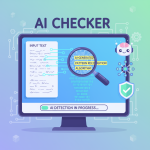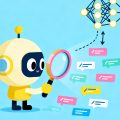Artificial Intelligence isn’t just changing how we work—it’s changing how we feel. The rise of AI mental health tools is revolutionizing emotional wellness by making support accessible, personalized, and stigma-free.
In 2026, millions of adults are using AI-powered chatbots, wearables, and virtual therapists to track mood, manage stress, and practice mindfulness. But how reliable are they? Can algorithms really understand emotion? Let’s explore this fast-growing intersection of technology and psychology.
What Is AI Mental Health?
AI mental health refers to the use of artificial intelligence—like machine learning, data analytics, and natural language processing—to monitor, support, and enhance mental well-being.
Examples You Already Know
-
Chatbots like Wysa, Woebot, and Replika simulate compassionate conversations to help you vent or reflect.
-
Wearables analyze sleep, heart rate, and stress patterns to predict emotional burnout.
-
AI-based therapy assistants summarize therapy notes and suggest CBT-based coping strategies.
These systems aren’t meant to replace therapists but to supplement care, offering 24/7 support for people who might not have easy access to human professionals.
Why AI Mental Health Matters in 2026
1. The Global Mental Health Crisis
According to WHO, anxiety and depression affect over 350 million adults worldwide. The post-pandemic world, rising living costs, and social isolation have made mental wellness harder than ever to maintain.
2. Accessibility & Affordability
Traditional therapy can be expensive or unavailable in many regions. AI-driven solutions—many available for free or low cost—help bridge this accessibility gap, providing instant self-care options anywhere, anytime.
3. Early Detection
AI can identify subtle shifts in tone, behavior, or sleep patterns—potentially flagging depressive symptoms weeks before a human might notice.
How AI Mental Health Tools Work
1. Data Collection
AI tools gather information from:
-
Chat interactions
-
Biometric signals (heart rate, sleep quality)
-
Journaling or social media tone analysis
2. Pattern Recognition
Algorithms use machine learning to detect mood trends—like increased negativity or insomnia—and may suggest relaxation or therapy resources.
3. Real-Time Feedback
Once patterns are spotted, AI systems send nudges such as:
“You’ve seemed more stressed lately—would you like to try a breathing exercise?”
This loop of observation and feedback enables proactive mental-health care rather than crisis response.
Benefits of AI Mental Health for Adults
1. 24/7 Support
AI companions never sleep. You can access check-ins, guided meditations, or emotional-tracking tools at any hour.
2. Reduced Stigma
Many adults feel more comfortable opening up to a non-judgmental digital assistant before seeking human therapy.
3. Personalized Care
AI tools adapt to your emotional patterns—learning when you’re most stressed and tailoring responses to your habits.
4. Empowerment Through Data
Seeing trends in your mood or energy helps you understand triggers and improve self-awareness.
Example:
Emma, a 38-year-old teacher, used an AI mood tracker that noticed her heart rate spikes every Sunday night. It helped her discover “Sunday anxiety” patterns and plan calming evening rituals.
Challenges & Ethical Concerns
1. Privacy and Data Security
Mental-health data is highly sensitive. Always ensure the app you use encrypts data and follows international privacy standards (like GDPR or HIPAA).
2. Algorithmic Bias
AI systems trained on limited data may misunderstand cultural or emotional nuances. This could lead to incorrect recommendations for certain groups.
3. Over-Reliance on AI
AI mental health tools are not substitutes for licensed professionals. In cases of severe anxiety, PTSD, or suicidal ideation, human care remains essential.
Practical Tips to Use AI Mental Health Tools Safely
-
Choose verified apps with transparent privacy policies.
-
Set boundaries—decide how often and when you’ll interact with the AI.
-
Combine AI support with real-world wellness: healthy eating, exercise, journaling, social connection.
-
Monitor emotional response: if using an app increases anxiety, take a break or consult a professional.
-
Keep perspective: view AI as an assistant, not an authority.
Top AI Mental Health Trends in 2026
1. Emotion-Aware Wearables
Next-gen wearables will track micro-changes in voice tone, pulse variability, and facial expressions to predict emotional distress before it peaks.
2. AI Therapy Co-Pilots
Therapists will increasingly use AI tools for note-taking, pattern recognition, and patient-progress analytics, freeing more time for empathetic listening.
3. Holistic AI Ecosystems
AI will integrate with sleep trackers, nutrition apps, and mindfulness programs—creating all-in-one mental-wellness ecosystems.
4. Ethical Regulations
Countries are introducing new mental-health AI laws to prevent misuse and “AI psychosis”—a phenomenon where users over-identify with chatbots.
How to Integrate AI Mental Health into Daily Life
-
Morning: Use an AI journaling app for gratitude prompts.
-
Midday: Check mood analytics and follow micro-break reminders.
-
Evening: Practice guided meditation suggested by your AI coach.
Tip: Pair AI wellness apps with mindfulness or physical activity to enhance benefits.
The Future of AI Mental Health
By 2026, AI-driven wellness will be less about machines and more about balance. Technology will complement—not compete with—human empathy.
The future is hybrid: where human compassion meets algorithmic precision.
Conclusion: Empower Your Mind with Smart Support
AI mental health offers a bridge between technology and self-care. It empowers adults to take charge of emotional wellness—on their schedule, in their way.
Start small: download one credible app, set aside 10 minutes daily, and track your mood for a week. You might discover that a digital companion can make a real-world difference.
FAQ: AI Mental Health Explained
Q1: Is AI mental health effective?
Yes—AI tools help identify mood trends, improve mindfulness, and offer immediate coping strategies. However, they complement—not replace—therapy.
Q2: Which are the best AI mental health apps in 2026?
Popular options include Wysa, Woebot, Youper, and Replika, each offering unique emotional-support features.
Q3: Can AI really understand emotions?
AI doesn’t “feel,” but it can analyze emotional signals like language tone, heart rate, and expression patterns to offer contextual feedback.
Q4: Is my data safe?
Use only apps that clearly disclose data usage and employ encryption. Avoid sharing sensitive details in unverified tools.
Q5: What’s next for AI mental health?
Expect more human-AI collaboration—where technology supports professionals in early diagnosis, crisis prediction, and global wellness outreach.
Call to Action:
👉 Take your first step toward emotional balance—try an AI mental health app today and explore how digital care can enhance your 2026 well-being journey.
